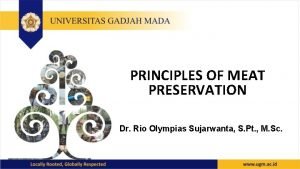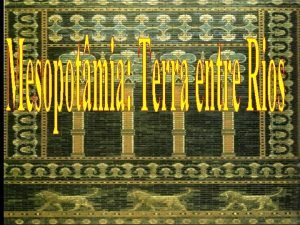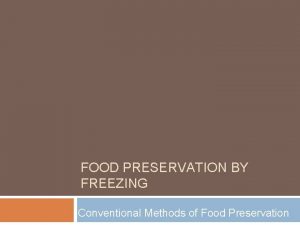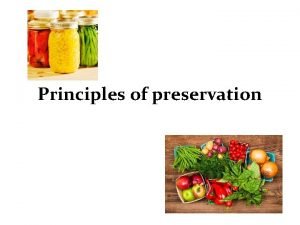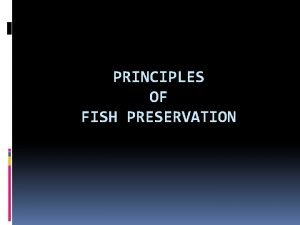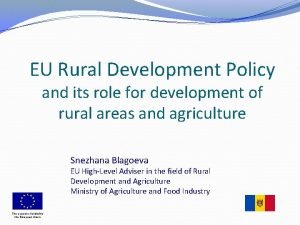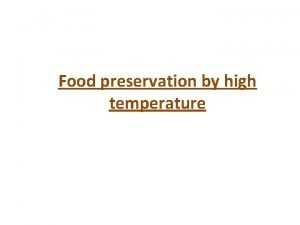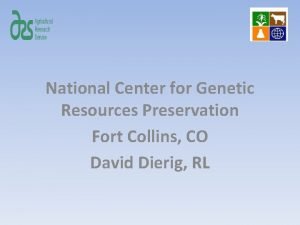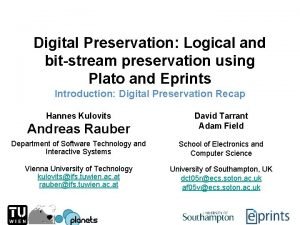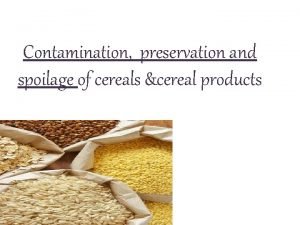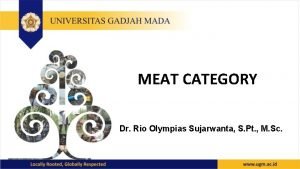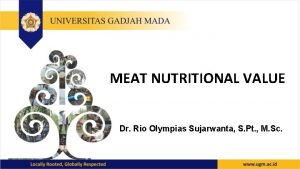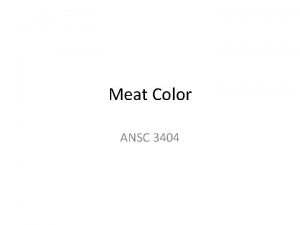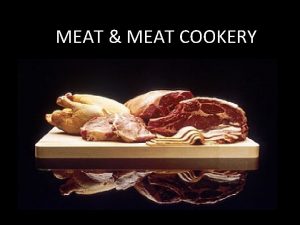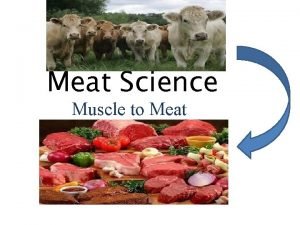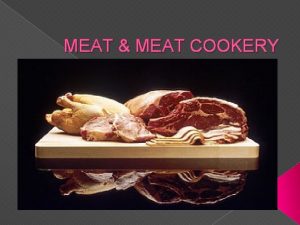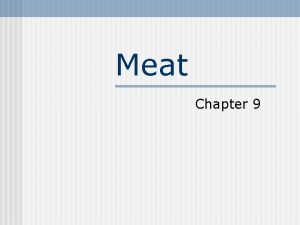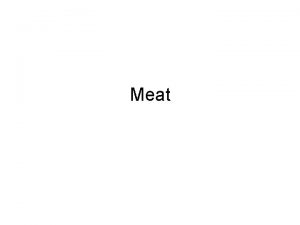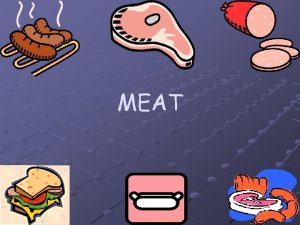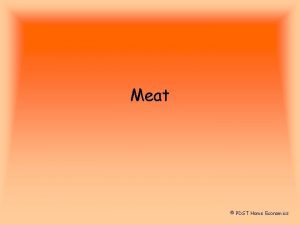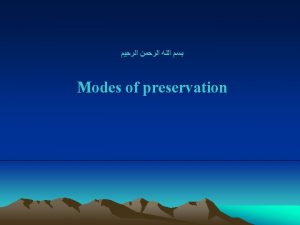PRINCIPLES OF MEAT PRESERVATION Dr Rio Olympias Sujarwanta














- Slides: 14

PRINCIPLES OF MEAT PRESERVATION Dr. Rio Olympias Sujarwanta, S. Pt. , M. Sc.

Sub Topics • Physical preservation and chemical preservation

Preservation of Meat An effort to extend the shelf-life of meat by inhibiting/limiting microbial growth and enzymatic or chemical reactions which can spoil meat. Principle of Meat Preservation • Controlling microbial activities by preventing contamination, preventing microbial growth, removing microbes, and killing microbes or spores. • Controlling enzymatic activities through endogenous enzyme inactivation, prevention and delay of chemical reactions. • Controlling insects, rodents and other physical influence which can spoil food (lighting, air, and physical pressure).

Function of Preservation Including: • Reducing any harm potential caused by microbes to consumers, • Maintaining meat quality especially its sensory characteristics, • Maintaining nutritional values at a safe level.

Physical preservation of meat • • Chilling 0 -6 o. C Freezing under 0 o. C Heating or cooking heat and cook Dehydration extracting the moisture, thereby inhibiting the • Freeze drying growth of microorganisms. Lowering the temperature of the product to below freezing, and then a high-pressure vacuum is applied to extract the water in the form of vapour • Irradiation Treating food with ionizing radiation can kill bacteria and parasites

Characteristics of Chemical Preservatives for Meat q Inhibiting or preventing changes in meat quality during limited storage. q Extending the shelf life. q Functioning as preservatives. q Improving the nutritional values, aroma and flavor. q Functioning as coloring agent. q Controlling the color. q Controlling the p. H.

Requirement of Preservatives • Not changing the sensory characteristics of food. • Safe for consumption at an effective concentration for preservation. • Easy to recognize and the level can be easily known. • The food quality does not harm consumers. • Economical.

Chemical Preservation q Chemical preservatives are bacteriostatic or fungistatic. q Some of the chemical preservatives for meat are: salt, nitrite, nitrate, sorbic acid, sugar, sulphur dioxide, propionic acid, and benzoic acid.

Curing • Curing is a meat processing by adding various ingredients such as Na. Cl, sodium nitrite or sodium nitrate, sugar, and spices. • Aims of curing are: (1) getting stable colors, (2) getting fine aroma, texture and palatability, (3) reducing folding during processing, (4) extending the shelf life of meat products.

Ingredients of Curing • Curing ingredients consist of: salt, sugar, nitrite, or nitrate. • Additional curing ingredients are: phosphate, spices, bicarbonate, sodium erythorbate, sodium ascorbate, potassium sorbate, hydrolyzed vegetable proteins, and monosodium glutamate.

Meat Smoking q Smoking is meat preservation by using wood smoke in the form of natural smoke or liquid smoke to meat or meat product. q The purposes of smoking are (1) to get specific flavor, (2) to improve the appearance or color, (3) to extend the shelf life due to its bacteriostatic actions, and (4) to prevent oxidation reaction or as antioxidant.

Composition of Wood Smoke q Phenol compounds q Organic acids q Alcohol (methanol) q Carbonyl compounds q Hydrocarbon compounds q Gases (CO 2, CO, O 2, N 2 O)

References • Aberle, E. D. , J. C. Forrest, D. E. Gerrard, E. W. Mills, H. B. Hedrick, M. D. Judge, R. A. Merkel, 2001. Principles of Meat Science. 4 th ed. Kendall/Hunt Publishing Company, Dubuque, Iowa. • Swatland, H. J. , 1984. Structure and Development of Meat Animals. Prentice-Hall, Inc. , Englewood Cliffs, New Jersey. • Soeparno, 2015. Ilmu dan Teknologi Daging. Cetakan ke-6 (Edisi Revisi). Gadjah Mada University Press, Yogyakarta. • Soeparno, 2011. Ilmu Nutrisi dan Gizi Daging. Cetakan pertama. Gadjah Mada University Press, Yogyakarta.

THANK YOU
 Principles of meat preservation
Principles of meat preservation Rio hondo student portal
Rio hondo student portal Rio eufrates e tigre
Rio eufrates e tigre Market form poultry
Market form poultry Freezing
Freezing Principle of canning
Principle of canning Principle of fish preservation
Principle of fish preservation Soil preservation
Soil preservation Floryzacja
Floryzacja High temperature preservation
High temperature preservation National center for genetic resources preservation
National center for genetic resources preservation Bitstream preservation
Bitstream preservation Preservation of cereals and cereal products
Preservation of cereals and cereal products Oakland affordable housing preservation initiatives
Oakland affordable housing preservation initiatives Hurdle technology
Hurdle technology
